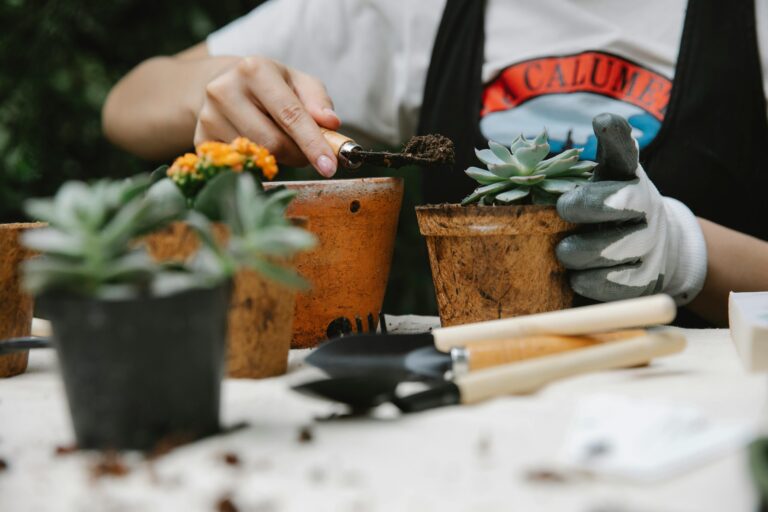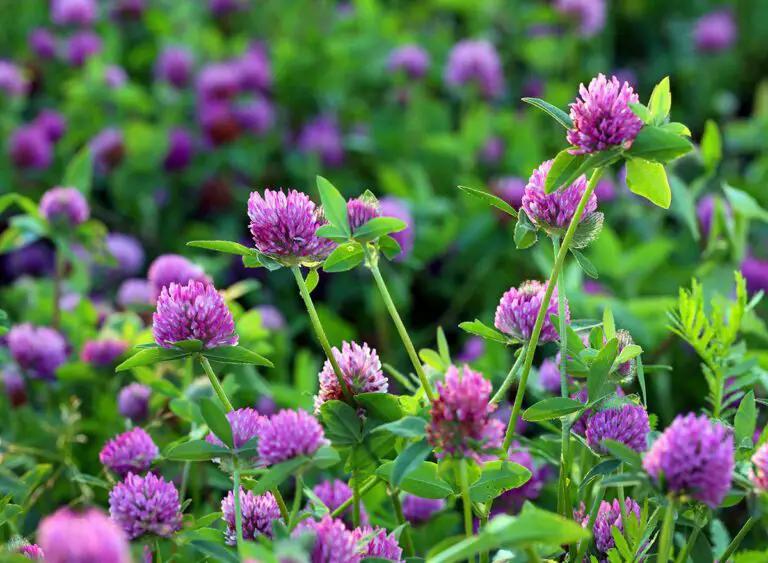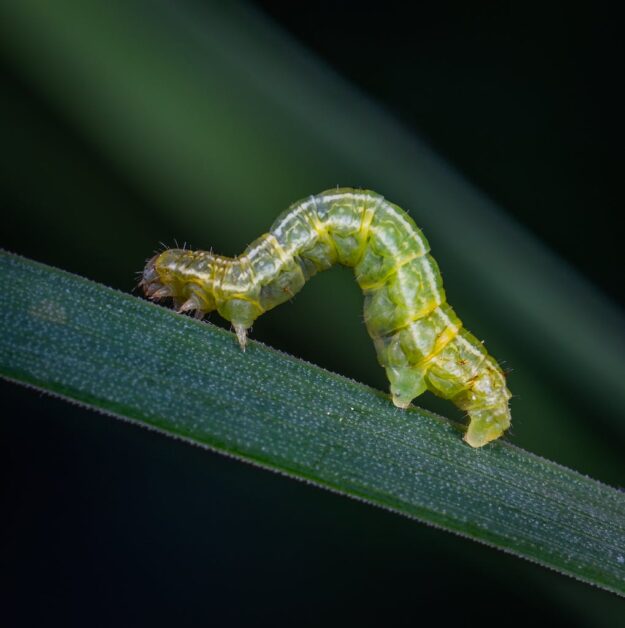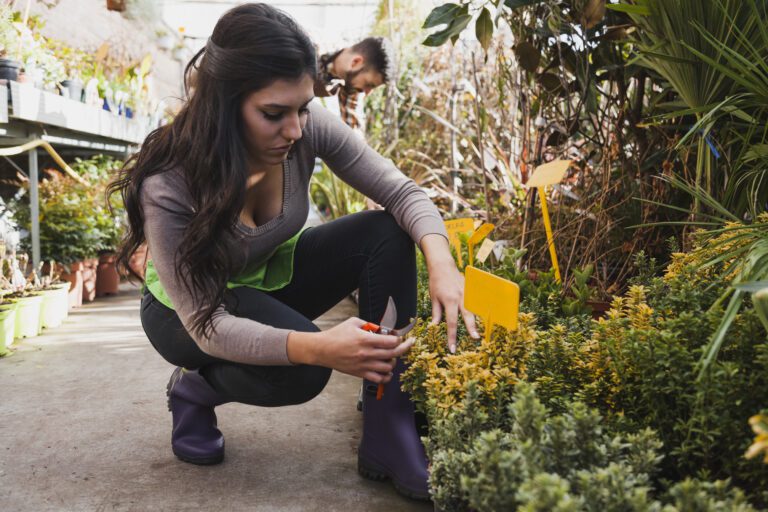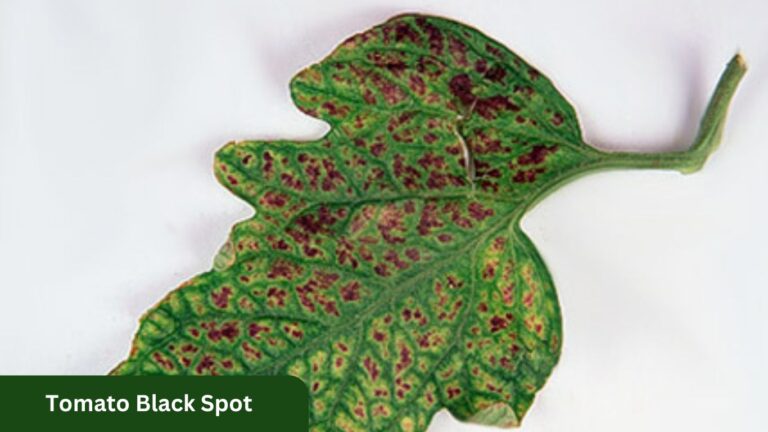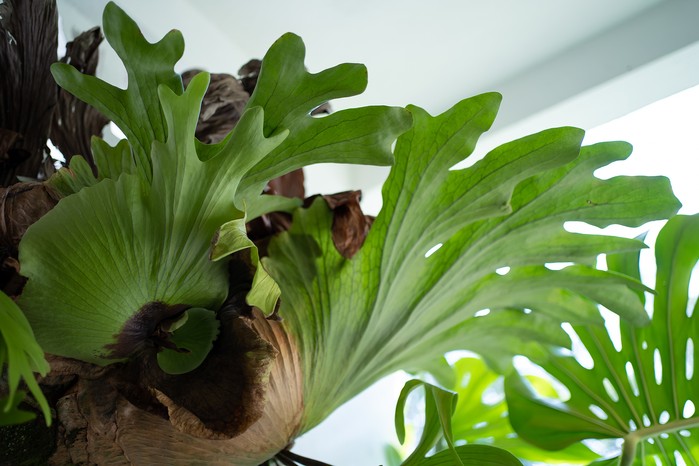The Kratky Method: 5 Vegetables You Can Grow Without Electricity
Table of Contents
Understanding the Kratky Method for Vegetable Cultivation
The Kratky method is a simple and effective technique for cultivating vegetables without the need for electricity or complex equipment. Developed by Dr. Bernard Kratky, this innovative method allows plants to grow in a passive hydroponic system, making it a popular choice among gardening enthusiasts.
One of the key features of the Kratky method is the use of a non-circulating nutrient solution that provides plants with the necessary nutrients for growth. This solution is placed in a container, and the plant’s roots are partially submerged in the solution, allowing them to absorb the nutrients as needed. Unlike traditional hydroponic systems, the Kratky method does not require a pump or aeration system, making it a cost-effective and low-maintenance option for vegetable cultivation.

The simplicity of the Kratky method makes it an ideal choice for beginners or those with limited space and resources. With the right selection of vegetables and proper monitoring of water levels and nutrient requirements, this method can yield impressive results. In the following sections, we will explore the benefits of growing vegetables without electricity, selecting the right vegetables for the Kratky method, and preparing your containers for optimal plant growth. By understanding these fundamental aspects of the Kratky method, you can embark on a rewarding journey of self-sufficiency and enjoy the satisfaction of harvesting your homegrown vegetables.
Exploring the Benefits of Growing Vegetables Without Electricity
Growing vegetables without electricity offers numerous benefits to gardeners. By using alternative methods such as the Kratky method, individuals can enjoy the advantages of self-sufficiency and reduced environmental impact. One of the primary benefits is the significant reduction in energy consumption. Unlike traditional gardening methods that often require electric pumps, timers, and lighting systems, the Kratky method relies on a passive hydroponic approach. This eliminates the need for electricity, resulting in lower energy bills and a smaller carbon footprint.
Another advantage of growing vegetables without electricity is the potential for increased crop yield. The Kratky method, specifically, allows plants to receive a constant supply of water and nutrients through a self-contained, non-circulating hydroponics system. This simple yet effective approach promotes root growth and nutrient absorption, leading to robust and healthy plants. Additionally, without the constraints of electric pumps and timers, gardeners have greater flexibility in their gardening practices. They can design and customize their setups based on the specific needs of the plants, maximizing their growth potential.
Overall, exploring the benefits of growing vegetables without electricity unveils a sustainable and practical solution for individuals looking to cultivate their own food. Not only does it contribute to a healthier environment, but it also empowers people to become more self-reliant and reduce their dependence on centralized food systems. With careful planning and proper implementation of methods like the Kratky system, gardeners can unlock the potential of their gardens and enjoy bountiful harvests without the need for electricity.
Selecting the Right Vegetables for the Kratky Method
When selecting vegetables to cultivate using the Kratky Method, it is important to choose varieties that are well-suited to this passive hydroponic system. Certain vegetables thrive in the stagnant nutrient solution and non-circulating water, making them ideal candidates for the Kratky Method. Leafy greens such as lettuce, spinach, and kale are popular choices due to their adaptability and shorter harvest times. These vegetables tolerate the low oxygen levels that can occur in the water, and they can also withstand fluctuations in pH levels.
| Vegetable | Recommended pH Range | Days to Harvest | Suitable Container Size | Additional Notes |
|---|---|---|---|---|
| Lettuce | 6.0 – 7.0 | 28-35 | Shallow, wide container | Well-suited for Kratky, grows well in nutrient-rich solutions. |
| Spinach | 6.0 – 7.0 | 35-45 | Shallow container | Prefers cool temperatures, ideal for Kratky in moderate climates. |
| Swiss Chard | 6.0 – 7.0 | 45-60 | Deep container | Tolerates a range of conditions, including the Kratky Method. |
| Basil | 5.5 – 6.5 | 60-90 | Shallow, wide container | Suitable for Kratky, ensure adequate support for tall varieties. |
| Cilantro | 6.0 – 7.0 | 60-90 | Shallow, wide container | Grows well in hydroponic systems, including the Kratky Method. |
| Green Onions | 6.0 – 7.0 | 60-90 | Shallow container | Suitable for Kratky, provide adequate spacing for bulb development. |
| Radishes | 6.0 – 7.0 | 25-30 | Shallow container | Quick-growing, suitable for Kratky, harvest when roots are developed. |
| Kale | 6.0 – 7.0 | 55-75 | Deep container | Resilient plant, can thrive in the Kratky Method with proper nutrient levels. |
In addition to leafy greens, herbs like basil and parsley are well-suited for the Kratky Method. Their compact root systems can easily absorb the available nutrients from the water without the need for additional aeration or circulation. This makes them low-maintenance options for beginners or those with limited space. Additionally, vine crops such as tomatoes and cucumbers can also be grown using the Kratky Method, although they may require additional support due to their larger size. By carefully selecting the right vegetables for the Kratky Method, gardeners can ensure optimal growth and harvests while minimizing the need for electricity or complex equipment.
• Leafy greens such as lettuce, spinach, and kale are ideal for the Kratky Method due to their adaptability and shorter harvest times.
• These vegetables can tolerate low oxygen levels in the water and fluctuations in pH levels.
• Herbs like basil and parsley have compact root systems that easily absorb nutrients from the water without requiring additional aeration or circulation.
• Vine crops such as tomatoes and cucumbers can also be grown using the Kratky Method but may need additional support due to their larger size.
• Selecting the right vegetables for the Kratky Method allows gardeners to achieve optimal growth and harvests while minimizing electricity usage and complex equipment.
Preparing Your Containers for the Kratky Method
When preparing your containers for the Kratky method of vegetable cultivation, it is important to consider the size and material of the containers. The containers should be large enough to accommodate the size of the plants and their root systems. Smaller plants, such as lettuce or herbs, can be grown in smaller containers, while larger plants, like tomatoes or peppers, will require larger containers. The material of the containers should be non-toxic and able to withstand the weight of the plants and the water. Plastic containers are commonly used for the Kratky method due to their affordability, durability, and lightweight nature.
Once you have selected suitable containers, it is essential to clean and sterilize them before use. This helps prevent the growth of harmful bacteria and fungi that can affect the plants. Start by washing the containers with a mild detergent and warm water. Rinse them thoroughly to remove any soap residue. After rinsing, sanitize the containers using a solution of 1 part bleach to 9 parts water. Allow the containers to soak in the bleach solution for at least 10 minutes. Rinse them again with clean water to remove any excess bleach. Properly preparing your containers will provide a clean and healthy environment for your plants, setting them up for success in the Kratky method.
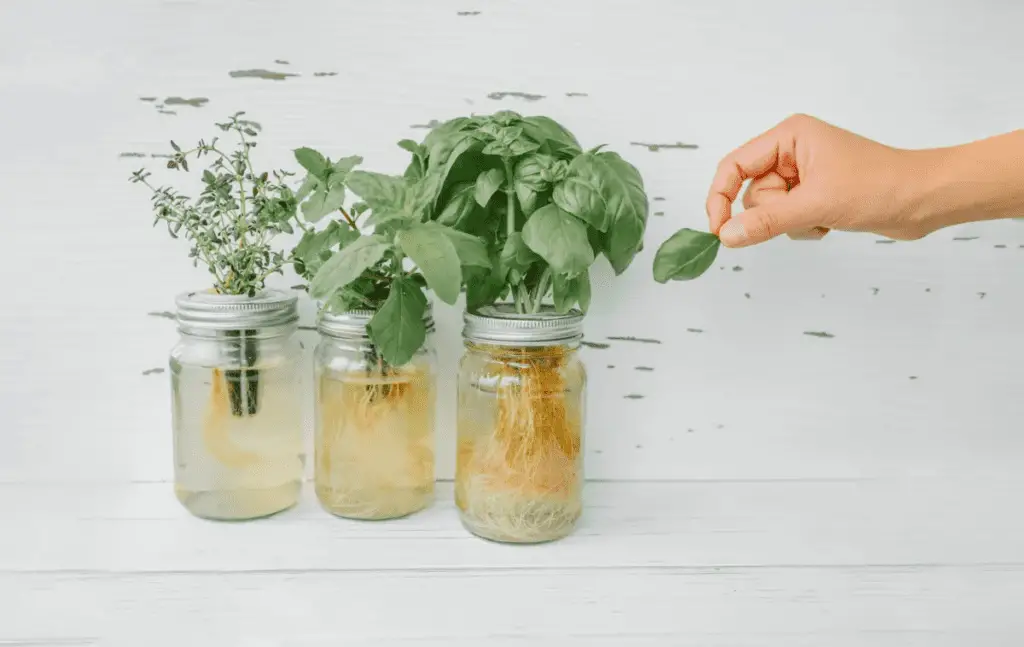
Choosing the Ideal Growing Medium for the Kratky Method
When it comes to choosing the ideal growing medium for the Kratky method, there are a few factors to consider. The growing medium, in this case, refers to the material that supports the root system of the plants. It plays a crucial role in providing a stable environment for the plants to thrive and obtain the necessary nutrients for growth.
One common growing medium used in the Kratky method is perlite. Perlite is a lightweight volcanic rock that is processed and heated until it expands, creating air pockets. This porous structure allows for excellent drainage and aeration, ensuring that the roots receive adequate oxygen. Additionally, perlite does not retain water, which helps prevent overwatering and reduces the risk of root rot.
Another option is vermiculite, which is a natural mineral that undergoes a similar expansion process to perlite. Vermiculite retains more moisture than perlite, making it suitable for plants with higher water requirements. It also provides good insulation, helping to regulate the temperature around the roots. However, it is important to note that vermiculite may compact over time, affecting drainage and aeration.
Alternatively, some gardeners prefer using a combination of perlite and vermiculite in equal proportions to achieve a balanced growing medium. This blend offers the benefits of both materials, promoting optimal root development and moisture retention.
Ultimately, the choice of growing medium for the Kratky method depends on the specific needs of the plants you intend to grow. Factors such as water requirements, drainage, and aeration should all be considered to ensure successful cultivation. Experimenting with different combinations and observing the results can help you find the ideal growing medium for your Kratky garden.
Planting Seeds or Seedlings in the Kratky System
To successfully plant seeds or seedlings in the Kratky system, there are several key steps to follow. First, determine the appropriate size and type of containers for your chosen vegetables. It is recommended to use plastic buckets or containers with lids to maintain optimal water levels and prevent evaporation.
Next, consider the growing medium for your plants. The Kratky method relies on a passive hydroponic system, where the plants absorb nutrients directly from the water. Therefore, a soilless medium such as perlite or vermiculite is ideal, as it provides stability for the plants while allowing the roots access to the water.
When it comes to planting, carefully sow the seeds or transplant the seedlings into the growing medium. For seeds, make sure to follow the recommended planting depth and spacing instructions. Gently press the seeds into the growing medium to ensure good contact.
For transplanting seedlings, create a hole in the growing medium slightly larger than the root ball and place the seedling inside. Gently firm the growing medium around the roots to eliminate air pockets. Proper spacing between plants is essential to avoid competition for nutrients and maximize growth.

Once planted, ensure that the containers are filled with water up to the appropriate level. The water will gradually be consumed by the plants, providing them with the necessary nutrients. It’s important to monitor the water levels regularly and refill as needed to maintain the ideal growing conditions.
By following these steps, you can successfully plant seeds or seedlings in the Kratky system and embark on a rewarding journey of homegrown vegetables. Stay tuned to discover how to monitor and maintain water levels, understand nutrient requirements, and troubleshoot common issues in the Kratky system.
Monitoring and Maintaining the Water Levels in the Kratky Method
Maintaining the proper water levels is essential for the success of the Kratky method in vegetable cultivation. In this water-based cultivation system, the plants do not receive any additional water once they are initially set up. Therefore, it is crucial to monitor and adjust the water levels to ensure the plants have an adequate supply for their growth and development.
To monitor the water levels, you can use a transparent or translucent container that allows you to see the depth of the water. This way, you can easily assess whether the water level is decreasing over time. Ideally, the plants should have access to water that covers the roots and provides them with sufficient oxygen. It is important to note that the water level will naturally decrease as the plants consume water through transpiration. However, if the water level drops too low, the roots may become exposed to air, leading to dehydration and stunted growth.
To maintain the water levels, you can either top up the container with water or replace it entirely. Topping up the water is a simple and convenient method, but it may lead to a buildup of nutrients and affect the pH level over time. On the other hand, replacing the water completely can be more effective in keeping the nutrient balance and pH level in check. Whichever method you choose, it is crucial to ensure the water quality is suitable for the plants’ needs and to regularly monitor the pH levels to prevent any imbalances that could harm plant growth.
In conclusion, monitoring and maintaining the water levels in the Kratky method are essential tasks for successful vegetable cultivation. By carefully observing the water depth and making necessary adjustments, gardeners can provide their plants with an optimal growing environment. However, it is important to strike a balance between convenience and water quality considerations when deciding to top up or replace the water. Following these practices will help ensure healthy, thriving plants in your Kratky garden.
Understanding the Nutrient Requirements for Vegetables in the Kratky Method
The Kratky method, a popular water-based cultivation technique, relies on a passive hydroponic system to grow vegetables without the need for electricity or complex nutrient delivery systems. This method is particularly attractive for those who seek a low-cost and low-maintenance approach to growing their own produce. However, understanding the nutrient requirements for vegetables in the Kratky method is crucial for ensuring optimal plant growth and health.
Vegetables, like all plants, require a balance of essential macronutrients and micronutrients to thrive. Macronutrients, including nitrogen (N), phosphorus (P), and potassium (K), are needed in relatively large quantities and play vital roles in plant growth and development. Micronutrients, on the other hand, are required in smaller amounts but are equally important for supporting various biochemical processes within plants. These include elements such as iron (Fe), manganese (Mn), zinc (Zn), and others.
| Nutrient | Function | Recommended Concentration |
|---|---|---|
| Nitrogen (N) | Essential for leaf and stem growth | 100-150 ppm |
| Phosphorus (P) | Promotes root development and flowering | 50-75 ppm |
| Potassium (K) | Supports overall plant health and fruit development | 150-200 ppm |
| Calcium (Ca) | Important for cell wall structure | 100-150 ppm |
| Magnesium (Mg) | Essential for chlorophyll production | 50-75 ppm |
| Sulfur (S) | A component of amino acids and proteins | 20-30 ppm |
| Iron (Fe) | Necessary for chlorophyll synthesis | 2-5 ppm |
| Manganese (Mn) | Involved in photosynthesis | 0.5-2 ppm |
| Zinc (Zn) | Essential for enzyme activation | 0.1-0.5 ppm |
| Copper (Cu) | Required for various metabolic processes | 0.1-0.2 ppm |
| Boron (B) | Aids in cell division and sugar transport | 0.5-1 ppm |
| Molybdenum (Mo) | Facilitates nitrogen metabolism | 0.01-0.1 ppm |
In the Kratky method, plants derive their nutrients from a static solution that is placed directly in the growing container. As the plants grow, they consume the available nutrients, which may become depleted over time. Therefore, it is essential to ensure that the nutrient solution is well-balanced and replenished as needed. Testing the nutrient levels and pH of the solution periodically can help determine the appropriate timing and dosage for nutrient supplementation. Additionally, using a high-quality hydroponic nutrient solution formulated specifically for the Kratky method can provide the necessary elements for robust and healthy vegetable growth.
Managing pH Levels for Optimal Growth in the Kratky Method
Maintaining the proper pH levels is crucial for optimal growth and nutrient absorption in the Kratky method of vegetable cultivation. The pH scale ranges from 0 to 14, with 7 being neutral. The ideal pH range for the Kratky method is between 5.5 and 6.5, slightly leaning towards the acidic side.
To ensure the pH levels are within the desired range, it is essential to regularly monitor and adjust the nutrient solution. One effective way to measure the pH is by using a pH meter or pH test strips specifically designed for hydroponic systems. These tools will provide accurate readings, allowing you to make necessary adjustments.
To lower the pH, you can add small amounts of phosphoric acid or citric acid to the nutrient solution. These acids are commonly used in hydroponics and are readily available at gardening supply stores. On the other hand, if the pH is too low, you can consider adding potassium hydroxide or calcium hydroxide to raise the pH. However, it is crucial to make adjustments gradually and retest the pH after each addition to avoid drastic fluctuations. Remember, maintaining a stable pH for your plants is key to their overall health and productivity.
(Please note that this is just an excerpt and not a complete section on managing pH levels in the Kratky method.)
Controlling Pests and Diseases in the Kratky System
Pests and diseases can be a major challenge when it comes to vegetable cultivation, and the Kratky method is no exception. While this system can reduce the risk of some common pests, such as soil-borne insects, it is essential to stay vigilant and take proactive measures to maintain a healthy growing environment.
One effective way to control pests in the Kratky system is through regular monitoring and inspection. Check your plants regularly for any signs of infestation, such as yellowing leaves, chewed foliage, or the presence of insects. Early detection can help you take immediate action before the problem worsens. Removing infected or damaged leaves and isolating affected plants can prevent the spread of pests and diseases throughout your garden. Additionally, consider using physical barriers, such as netting or row covers, to keep pests away from your plants. These simple steps can go a long way in keeping your Kratky vegetables pest-free.
| Issue | Prevention/Control Measures |
|---|---|
| 1. Algae Growth | – Use opaque containers to block light and prevent algae growth. |
| – Keep the nutrient solution clean and change it regularly. | |
| 2. Fungal Diseases | – Maintain good air circulation around plants. |
| – Avoid overcrowding plants to reduce humidity. | |
| – Use a clean and sterile growing medium. | |
| 3. Aphids and Other Pests | – Inspect plants regularly for pests. |
| – Introduce beneficial insects like ladybugs or lacewings. | |
| – Use insecticidal soap or neem oil as a natural pesticide. | |
| 4. Root Rot | – Ensure proper drainage to prevent waterlogging. |
| – Use a well-aerated growing medium. | |
| – Avoid overwatering; let the medium dry between watering. | |
| 5. Nutrient Deficiency | – Monitor nutrient levels regularly. |
| – Adjust nutrient solution according to plant needs. | |
| – Use a balanced hydroponic nutrient solution. |
Another important aspect of pest and disease control is maintaining a clean and tidy garden. Remove any fallen leaves, weeds, or other plant debris that may harbor pests or serve as breeding grounds for diseases. Disinfecting your tools, containers, and growing media between uses can also help prevent the transmission of diseases. Additionally, consider incorporating companion planting techniques, such as planting marigolds or basil, which act as natural repellents for certain pests. By practicing good hygiene and implementing preventive measures, you can minimize the risk of pests and diseases in your Kratky system.
Harvesting and Enjoying Your Homegrown Kratky Vegetables
Harvesting and enjoying your homegrown Kratky vegetables is the culmination of your hard work and dedication to hydroponic gardening. As you observe the lush green leaves and vibrant colors of your plants, it’s a gratifying experience to know that you’ve successfully nurtured these crops from tiny seeds or seedlings to bountiful harvests.
When it comes to harvesting Kratky vegetables, timing is crucial. Each vegetable variety has its own optimal harvesting window, which can vary based on factors such as the plant’s growth rate and environmental conditions. To ensure maximum flavor and nutritional value, it’s essential to harvest your vegetables at the peak of ripeness. This is when they are bursting with flavor and packed with essential vitamins and minerals.
To determine if your vegetables are ready to be harvested, consult the specific guidelines for each plant variety. For leafy greens like lettuce and spinach, harvest individual leaves as needed, starting from the outer leaves and working your way inward. This will allow the inner leaves to continue growing and regenerating for future harvests. For other crops, such as tomatoes or peppers, wait until the fruits reach their full size, firmness, and color before picking them.
Tips for Success in Implementing the Kratky Method
Successfully implementing the Kratky method for vegetable cultivation can be a rewarding experience for gardening enthusiasts. To ensure a fruitful journey, here are some tips for maximizing your chances of success.
First and foremost, selecting the right vegetables is crucial. Not all plants thrive in the nutrient-rich, oxygen-deprived environment provided by the Kratky system. It is recommended to choose leafy greens such as lettuce, spinach, and kale, as well as herbs like basil and parsley. These vegetables have been proven to adapt well to the stagnant water conditions and limited root space of the Kratky method.
Additionally, proper monitoring and maintenance of water levels are essential for optimal growth. Make sure that the water level remains consistent throughout the plant’s lifecycle, keeping the roots partially submerged. It is important to maintain a balance, as too much water can cause oxygen deficiency, leading to root rot, while too little water can hinder nutrient absorption and stifle growth.
Stay tuned for further sections in this article where we will explore more tips and best practices for implementing the Kratky method successfully. With the right knowledge and approach, your hydroponic journey can be a bountiful one, providing you with a sustainable source of fresh and delicious vegetables throughout the year.
Troubleshooting Common Issues in the Kratky System
One of the most common issues that gardeners may encounter when using the Kratky system is the development of algae in the nutrient solution. Algae can thrive in the stagnant water of the reservoir, causing a range of problems for your plants. To address this issue, it’s important to ensure that your containers are properly sealed to prevent light from reaching the nutrient solution. Light exposure promotes algae growth, so using opaque containers or covering them with materials such as foil can help prevent this problem. Additionally, adding a small amount of hydrogen peroxide to the nutrient solution can help inhibit algae growth without harming your plants.
Another potential issue in the Kratky system is the occurrence of root rot. Root rot is a fungal infection that can occur when the roots are exposed to excessive moisture for prolonged periods. To mitigate this issue, it’s crucial to monitor and maintain the water levels in the reservoir. If the water level drops too low, the roots may dry out, while having the water level too high can lead to oxygen deprivation and encourage the growth of rot-causing fungi. Regularly checking the water level and topping it up as needed can help ensure a healthy environment for your plants. Additionally, adding beneficial bacteria or fungicides to the nutrient solution can help prevent the development of root rot and promote overall plant health.
Expanding Your Kratky Garden: Growing Beyond the 5 Recommended Vegetables
As a gardener who has successfully implemented the Kratky method for vegetable cultivation, you may find yourself wanting to grow beyond the five recommended vegetables. While these vegetables – lettuce, kale, spinach, bok choy, and Swiss chard – are great choices for beginners, there is a world of possibilities waiting for you to explore.
When it comes to expanding your Kratky garden, it’s important to consider the specific requirements and characteristics of different vegetable varieties. Some vegetables may require more space to grow, while others may prefer different nutrient ratios. For example, tomatoes are a popular choice for Kratky gardening due to their versatility and bountiful harvests. With proper support and larger containers, you can enjoy the taste of homegrown tomatoes throughout the growing season.
Another vegetable that can thrive in the Kratky system is peppers. Whether you prefer mild bell peppers or fiery chili peppers, these plants can adapt well to the water-based cultivation method. Just make sure to provide ample support for the heavy fruiting branches. Additionally, herbs like basil, parsley, and cilantro can add a fresh burst of flavor to your meals and are well-suited for the Kratky method.
Expanding your Kratky garden beyond the five recommended vegetables opens up a whole new world of possibilities. By considering the specific needs of different vegetable varieties and providing the necessary support, you can enjoy a diverse and abundant harvest right at your doorstep. So go ahead and experiment with new and exciting vegetables to take your Kratky garden to the next level. Keep in mind the space requirements, support, and nutrient ratios to ensure the optimal growth of your chosen plants.
Exploring Other Water-Based Cultivation Methods for Self-Sufficiency
Water-based cultivation methods have revolutionized the way we grow our own food, providing a sustainable and efficient alternative to traditional soil-based gardening. While the Kratky method has gained popularity for its simplicity and low-cost setup, there are other water-based cultivation methods worth exploring for self-sufficiency.
One such method is the Nutrient Film Technique (NFT), which involves a continuous flow of a thin film of nutrient-rich water over the plant roots. This method is known for its efficient use of water and nutrients, making it ideal for small-scale indoor gardens. Additionally, the Deep Water Culture (DWC) system, also known as the “raft system,” suspends plant roots directly in a nutrient-rich solution, providing ample oxygen and nutrients for optimal growth. This method is particularly well-suited for large-scale production and commercial farming.
Both the NFT and DWC systems require careful monitoring and adjustment of nutrient levels, pH balance, and water temperature. However, with proper knowledge and attention to detail, these methods can yield impressive results and provide a bountiful harvest. By exploring alternative water-based cultivation methods like NFT and DWC, you can expand your gardening horizons and further enhance your self-sufficiency goals.
What is the Kratky method for vegetable cultivation?
The Kratky method is a water-based cultivation technique that allows vegetables to grow without the need for electricity or constant monitoring. It involves growing plants in a container filled with a nutrient-rich solution and allowing them to absorb the water and nutrients as needed.
How do I select the right vegetables for the Kratky method?
When choosing vegetables for the Kratky method, it is important to select plants that have a shorter growing period and do not require excessive amounts of water. Leafy greens like lettuce, spinach, and kale are excellent choices, as well as herbs like basil and cilantro.
What is the ideal growing medium for the Kratky method?
Unlike traditional cultivation methods, the Kratky method does not require a growing medium such as soil. Instead, the plants are placed in containers filled with a nutrient-rich solution that provides all the necessary nutrients for growth.
How do I monitor and maintain water levels in the Kratky method?
In the Kratky method, the water level is initially filled to cover the bottom of the plants’ roots. As the plants grow, they will absorb the water, causing the water level to decrease. It is essential to regularly check and maintain the water levels to ensure the plants have enough water for optimal growth.
What are the nutrient requirements for vegetables in the Kratky method?
The nutrient requirements for vegetables in the Kratky method are primarily met through the nutrient-rich solution in which they are grown. The solution should contain a balanced combination of essential nutrients such as nitrogen, phosphorus, and potassium, as well as micronutrients like iron, calcium, and magnesium.
How do I control pests and diseases in the Kratky system?
Pests and diseases can be controlled in the Kratky system by practicing good hygiene, regularly inspecting the plants for signs of pests or diseases, and promptly addressing any issues that arise. Organic pesticides or natural pest control methods can also be used if necessary.
What are some tips for success in implementing the Kratky method?
Some tips for success in implementing the Kratky method include ensuring proper lighting for the plants, maintaining appropriate water levels, regularly monitoring nutrient levels, and providing adequate ventilation. Additionally, selecting the right vegetables and paying attention to their growth requirements will contribute to success.
How can I troubleshoot common issues in the Kratky system?
Common issues in the Kratky system may include nutrient deficiencies, pH imbalances, or plant diseases. To troubleshoot these issues, you can adjust the nutrient solution, test and adjust the pH levels, and address any signs of diseases promptly.
How can I expand my Kratky garden and grow beyond the recommended vegetables?
To expand your Kratky garden and grow beyond the recommended vegetables, you can experiment with other plants that have similar growing requirements. Some options include tomatoes, peppers, cucumbers, and strawberries. It is important to research the specific needs of each plant to ensure successful growth.
What are some other water-based cultivation methods for self-sufficiency?
In addition to the Kratky method, there are several other water-based cultivation methods for self-sufficiency, such as aquaponics, hydroponics, and aeroponics. These methods involve growing plants in water or mist without the use of soil, providing an efficient and sustainable way to produce food.

Pallavi Gupta is a burgeoning writer at SouthElMonteHydroponics, blending her passion for data analysis with a keen interest in biotechnology. Currently pursuing a Bachelor’s in Biotechnology at Amity University, Pallavi delves into the intricacies of life sciences while gaining hands-on experience in the exciting world of data analysis. Her unique background provides a fresh perspective on hydroponic farming, as she explores the intersection of biotechnology and sustainable agriculture. Through her writing, Pallavi aims to bridge the gap between data-driven insights and innovative farming practices, inspiring others to harness technology for a greener future.

